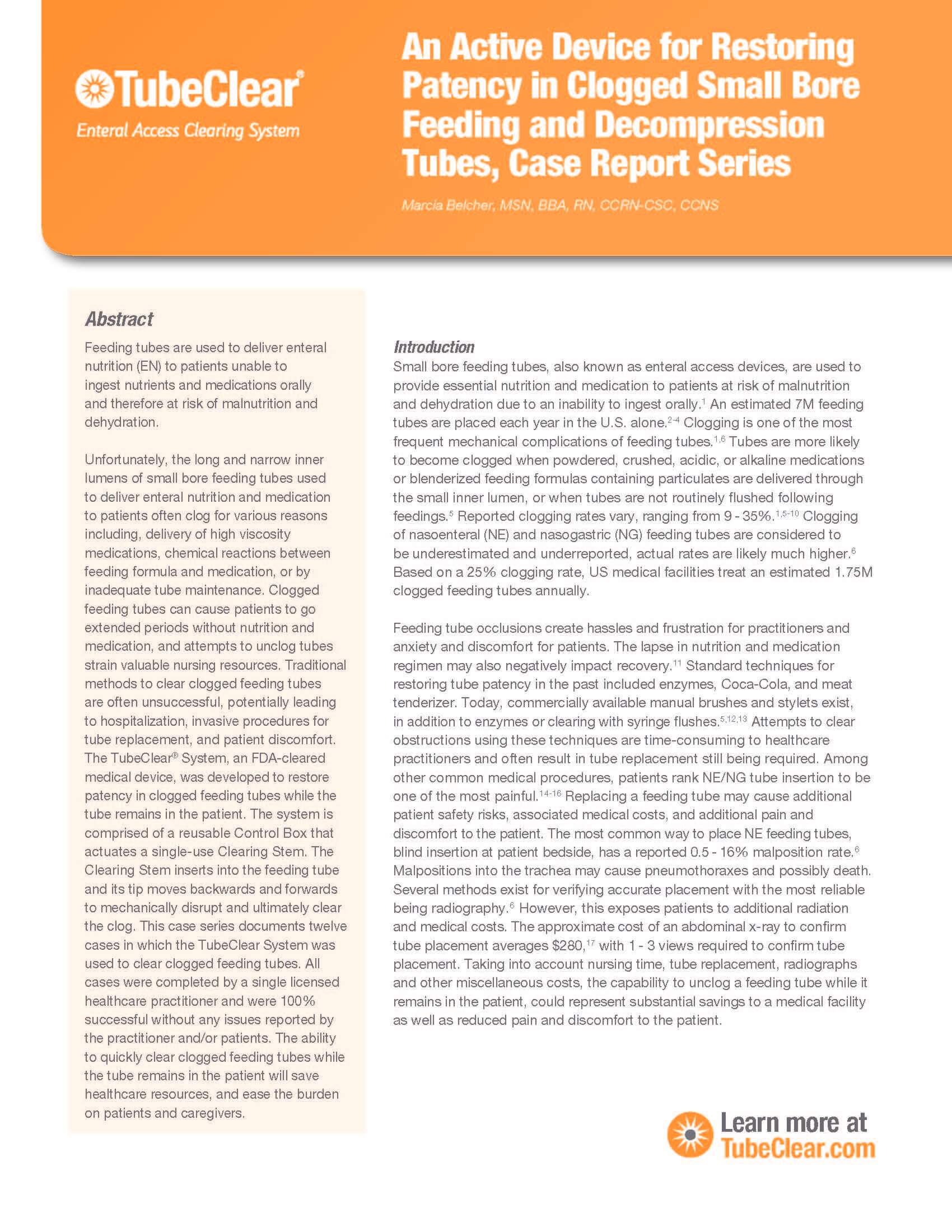Marcia Belcher, MSN, BBA, RN, CCRN-CSC, CCNS
Small bore feeding tubes, also known as enteral access devices, are used to provide essential nutrition and medication to patients at risk of malnutrition and dehydration due to an inability to ingest orally. An estimated 7M feeding tubes are placed each year in the U.S. alone. Clogging is one of the most frequent mechanical complications of feeding tubes. Tubes are more likely to become clogged when powdered, crushed, acidic, or alkaline medications or blenderized feeding formulas containing particulates are delivered through the small inner lumen, or when tubes are not routinely flushed following feedings. Reported clogging rates vary, ranging from 9 – 35%. Clogging of nasoenteral (NE) and nasogastric (NG) feeding tubes are considered to be underestimated and underreported, actual rates are likely much higher. Based on a 25% clogging rate, US medical facilities treat an estimated 1.75M clogged feeding tubes annually.
This is one of the best devices to come out in a long time to allow critical care nurses to do what they do best…care for their patients.
